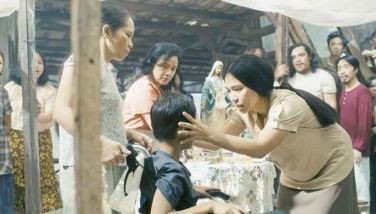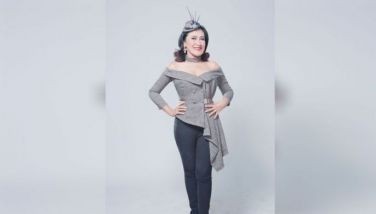The songs The Beatles were singing
MANILA, Philippines - Examining the songs The Beatles were singing, most of which were contemporary songs at that time, gives one an impression that The Beatles, like anyone else, were simply a product of their own period.
“We were influenced as much as we influenced.”
John Lennon made this declaration in his famous Playboy interview published shortly before he was murdered almost 30 years ago to date. It was as much a recognition of the roots of the band as the influences The Beatles continue to make on bands of musicians in the last four decades.
But, probably unknown to many, long before the Lennon-McCartney tandem started to churn out timeless classics, the duo comfortably pillaged for songs to perform the deep catalogue of contemporary and not-so-distant music they heard or listened to. The magic was in the interpretation. When they did covers, The Beatles literally breathed new life into these songs. How many of our listeners today would believe that Twist and Shout, Please Mr. Postman, Anna (Go To Him), A Taste of Honey are not original Beatles songs? Does anyone remember Peggy Lee’s original version of Till There Was You? Or Dr. Feelgood’s Mr. Moonlight, Larry William’s Dizzy Miss Lizzie and Buck Owens and the Buckaroos’ Act Naturally?
When John and Paul met on July 6, 1957, John Lennon fronting the Quarrymen was singing nothing but covers. A partial recording of three songs from the repertoire that legendary afternoon surfaced years ago to the delight of “completists” or that segment of collectors that is to my mind out to get anything recorded of The Beatles. John remembered singing Be-Bop-A-Lula, a Gene Vincent original, while Paul vividly remembers Come Go With Me by the Dell Vikings, not because the band was great, but rather he noticed John did not know the lyrics and was simply ad-libbing. Two more songs are preserved in digital copy by now: Baby Let’s Play House by Elvis Presley, and Puttin’ On The Style by Lonnie Donegan.
It was also a cover, which got Paul into The Beatles. That same day, Paul showed off his virtuoso performance of Eddie Cochran’s Twenty Flight Rock and John was very much impressed. Later that year, George Harrison will exhibit the same skillful guitar picking with Raunchy made popular that year by Bill Justis And His Orchestra. Lennon’s doubts about George’s young age vanished instantly and he invited him to be the group’s lead guitarist.
In 1958, the group ventured into recording and did tapes of Buddy Holly’s That Will Be the Day and a rare Harrison-McCartney original In Spite of All the Danger. Fans were treated to a great listen of this first informal recording session by The Beatles with the release of the group’s Anthology series.
The first official recording by the group came during its apprenticeship in Hamburg in 1961. Orchestra leader Bert Kaempfert, doubling as talent scout for Polydor, spotted Tony Sheridan and invited him to record. Sheridan invited The Beatles to back him up. These sessions yielded several records including a version of Ray Charles’ What I’d Say, swing-era Sweet Georgia Brown, Leiber/Stoller’s Ruby Baby, the Sheridan-penned Why (Can’t You Love Me Again), Jimmy Reed’s Take Some Insurance On Me Baby, another rare collaboration, this time between John and George, the instrumental Cry For A Shadow, and last but not the least, the traditional My Bonnie, which drew Brian Epstein to The Beatles.
The Beatles’ stay in Hamburg produced several discs of live performances with varying quality. To beat bootleggers, some record companies officially released a compilation of the group’s live performances in Star-Club in Hamburg cashing in on the rarity of these recordings. In 1985, Teichiku Records produced a 32-song disc, while a year later, US-based K-Tel came out with a lesser compilation. Both were extracted from the highly bootlegged December 1962 stint, the Fab Four’s last, in Germany. Again, as expected, most of the songs are covers including Arthur Alexander’s Where Have You Been All My Life, the heavily covered Red Sails in the Sunset, Fats Waller’s Your Feet’s Too Big, multi-recorded Hully Gully, Charles’ Hallelujah I Love Her So and Frank Ifield’s 1962 version of I Remember You.
Several original compositions such as I Saw Her Standing There and Ask Me Why, which appeared in The Beatles’ debut album Please Please Me, already populated these early Hamburg live performances.
It was not until 1994 when EMI released Live At The BBC that a massive dose of Beatles covers came out officially. The two-disc release was really a gem in the sense that it gave non-British fans the chance to listen to The Beatles perform in various BBC outfits in the early years of Beatlemania. A total of 29 unreleased cover tracks appeared in this compilation, some of which were borrowed from the catalogues of Chuck Berry (Johnny B. Goode, Carol, Sweet Little Sixteen, Too Much Monkey Business, Memphis), Little Richard (Lucille, Ooh! My Soul), Arthur Alexander (Soldier of Love, A Shot of Rhythm and Blues) and Lieber/Stoller (Youngblood, Some Other Guy). On top of these live staples, the group did not miss Ray Charles’ I Got a Woman, Bacharach’s Baby It’s You and Goffin/King’s Keep Your Hands Off My Baby, demonstrating the wide range of musical interest The Beatles nurtured.
Not only that. Once The Beatles fancied an artist, they strove to learn their songs including their B-Side releases. A Shot of Rhythm And Blues is the B-side of Arthur Alexander’s You Better Move On. Memphis Tennessee is the other side of Chuck Berry’s 1959 Back in the U.S.A. single. From Carl Perkins, The Beatles borrowed Lend Me Your Comb, Matchbox, Sure To Fall (In Love With You) and Honey Don’t — all flip sides.
Even in the peak of their fame, The Beatles did not abandon their rock and roll heroes and influences. The songs they were singing long before they became famous songwriters remained staples in their repertoire. Twist and Shout, Rock And Roll Music, Roll Over Beethoven, Honey Don’t, Dizzy Miss Lizzie, Boys, Kansas City/Hey Hey Hey all occupied a special place in their live performances.
In the studio, the group continued to record non-originals until 1965 with the exception of the album A Hard Day’s Night, which stands out as a straight Lennon-McCartney album.
Please Please Me, the band’s debut album, had six covers including Chains, Baby It’s You and Twist and Shout. The followup album, With the Beatles, contained seven songs written by other songwriters counting Barrett Strong’s 1959 and first Motown hit Money (That’s What I Want), Smokey Robinson’s You Really Got A Hold On Me and Devil In Her Heart, originally recorded by The Donays in 1962. Its fourth release Beatles for Sale carried six non-original materials — Buddy Holly’s Words of Love, Chuck Berry’s Rock and Roll Music, Carl Perkins’ Everybody’s Trying To Be My Baby and Honey Don’t. Finally, in 1965 the Fab Four produced Help! bearing only two covers, Act Naturally sung by Ringo and Dizzie Miss Lizzie performed by John.
Examining the songs The Beatles were singing, most of which were contemporary songs at that time, gives one an impression that The Beatles, like anyone else, were simply a product of their own period. They understood what was going on, appreciated the music of their generation and derived inspiration from the experience to create some of the best songs in rock and popular music.
Throughout their musical career, The Beatles, as individual musicians, would revisit these influences. Ringo started his solo career with a revival album aptly called Sentimental Journey. In 1975, Lennon produced his own album of rock-and-roll classics as a tribute to his heroes, while Paul felt the urge in 1989 with his exclusive Russian release CHOBA B CCCP (Back in the USSR). At the turn of the century, he gathered top musicians to produce Run Devil Run, a followup to this experience mixing rock classics with his own compositions.
Meanwhile, George Harrison had his dose of covers in his solo albums. In 1975, he performed The Everly Brothers’ classic Bye Bye Love with his best friend Eric Clapton, did some Hoagy Carmichael covers in the early ’80s and made a comeback hit in 1987 with I Got My Mind Set On You, a Rudy Clark composition recorded in 1962 by James Ray.
Paul admits the drawing power of these songs. In one song from his 1997 album Flaming Pie, one would feel he continued to talk to John: “For a while, we could sit... and discuss all the vast intricacies of life... Talk about a range of subjects, anything you like. But we always came back to the songs we were singing at any particular time.”
- Latest
- Trending
































